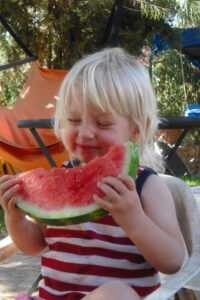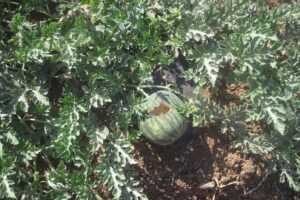This week we are pleased to introduce you to very unique local producers, Eliezer and Sarah Rose of Shorshei Zion, who produce fresh, probiotic, organic food. In their own words:
Shoreshei Tzion provides live healing pro-biotic foods, beverages and Healing Raw Foods. We specialize in creating pro-biotic and raw foods and drinks without using any artificial ingredients or preservatives. Our products are made in small batches to ensure quality and freshness. We have a long list of products that we make every week and we are adding new products all the time. We are very excited to start offering our products through Chubeza, these are the available products:
– Live Sauerkrauts, Kimchi, Pickles, Live Roots & other Seasonal Pro-biotic pickled Veggies. – Wild Pro-Biotic Mustarג – Raw Flax Crackers, (contain NO Gluten, eggs, oil, or sugar) – Live Organic Kombucha – Natural Beers: Pale Ale, Maple Buckwheat, Chocolate Stout, Nut Brown
About Us
Eliezer & Sararose Tzion first got involved with Live Ferments with a fermented tea called Kombucha. We were hooked from the beginning. The transformational process of fermentation was fascinating and inspired us to explore other ferments, such as pickled veggies, kefir, pro-biotic sodas and more. Driven by the belief in the importance of eating food that is alive, we began to create crackers and other raw food desserts made from live nuts, seeds, fruits and veggies. We make an effort to use ingredients that are as local, fresh, and organic as possible. We feel proud to offer quality, healing, live foods. We can heal ourselves by the food we eat. Enjoy!
If you see something on our menu besides these products that really interests you please contact us and we will try to get it to you.
Contact: [email protected] 054-7895319
As usual, you may order via the Chubeza order form, by email or telephone.
________________________________________
Over the past weeks we discussed the E-coli scare, organic crops and irrigation. I found this article by Aviv Lavie with simply-presented information about organic crops, contaminations, fears and dangers (in Hebrew).
_____________________________________
Daybreak In The Summer
A lovely morn! The summer night is gone; How hushed and still is all the world In wonder at the dawn.
– Japanese Hokku
Many are the summer wonders bursting from Chubeza’s fields: the sweet, delectable corn you’ve been receiving over the past weeks; the joyful okra that has recently begun yielding impressive quantities; the varied hues, shapes and varieties of squash; the long Thai beans, the short soy bean and many other bean variations; and our representatives in the fruit department, the melon and watermelon. The wonders of the watermelon are so great that we shall devote this week and next week’s Newsletter to this spectacular red, juicy, delicious treat.
When I returned home from the farm last week and announced a watermelon meal, Shachar first had to clarify matters: was this a regular watermelon or a Chubeza watermelon? After hearing it was a homegrown Chubeza product, she and Netta impatiently waited for me to slice it open (sorry, their mother inherited her father’s tendency to slice fruits and vegetables very slowly and diligently…) My sly six-year-old Netta stood at my side, wide-eyed as she declared she is “very very” thirsty, but does not wish to fill up on water, which is why she needs a watermelon, which as we all know is comprised mainly, but not only, of water… Shachar simply opened her mouth wide like a little bird, to receive a piece of watermelon straight onto her tongue Then we all celebrated this heavenly, sweet seedless watermelon. The baby, Talia, instinctively realized she was on a battlefield and gobbled up her pieces in three seconds. She then began a vociferous horn-like tooting, meaning “more!”
At these moments I thank summer for arriving.
Chubeza’s love affair with watermelons started with naiveté, pretentiousness, and…. failure. During my last year in California, just before I established Chubeza, I raised red, orange and yellow watermelons (the inside colors) in the farm of Joe Perry, my mentor. We had nice success with the yields, and I was under the impression that watermelon-growing would be simple, and I added watermelon to our crop list. The first year, the watermelons simply did not grow, and we only picked a few dozen from our fancy beds. Fortunately, back in 2004, our entire clientele also numbered a few dozen, so they received the watermelons as planned (which, admittedly, weren’t too sweet). One of the main reasons for this failure was the timing. I seeded watermelons like in California, at the end of spring. Yet springtime in Israel is fraught with viruses and disease, particularly among the gourd family to which our watermelon friend belongs.
After taking a hiatus of several years, gaining experience with gourds and their viruses, we made a second watermelon attempt two years ago. This time we seeded earlier and harvested a greater yield, and last year we did even better. This year we dared to plant seedless watermelon plants. This sort of watermelon-growing is more complex than raising a standard seed-filled watermelon, for we are essentially trying to fight nature. The mission of every fruit and vegetable is to reproduce and generate offspring (seeds), man, meanwhile, is bent on getting rid of the seeds, and not by spitting them out: human beings had grown weary of seeded fruits and set out to develop seedless varieties. Actually, a seedless watermelon does contain some tiny seeds, however most are transparent as well as infertile. You must admit this is strange, to try to develop a fruit which cannot produce seeds, offspring: on one hand, a vast scientific effort is being placed into refining and improving human fertilization via IVF, freezing embryos and sperm, surrogates, etc, and simultaneously, we are encouraging sterility for the fruits.
So how do these “seedless” watermelons work? Regular watermelon seeds are diploid seeds, i.e., containing two sets of X chromosomes. Those used in order to produce seedless watermelons are tetraploid, possessing four sets of X chromosomes. Seedless watermelon seeds have a harder than average shell, which is why it is more difficult to grow them from seeds. In most cases they are planted as transplants that were started in the nursery under controlled conditions. The tetraploid seeds sprout and become plants that will generate leaves and flowers, but no fruit unless they’re fertilized from flowers of a regular seeded watermelon. Therefore, you must plant one plant of regular watermelons for every three-four plants of seedless ones. During pollination, each seed contributes half of its chromosomes: 1+2, resulting in a fruit whose seeds are tetraploid- possessing three sets of chromosomes. This number disrupts the seed’s ability to reproduce, and ultimately sterilizes it. Thus we receive a fruit which is juicy and sturdier than its seeded friends, but came of “virgin propagation” from an unfertilized cell.
The watermelon requires much heat, a throwback to its origins in South Africa and the Kalahari Desert. In the desert the watermelon, which contains over 90% water, was an important and vital source of liquid to man and wild animals. The difficulty of choosing a good watermelon is an old story. In its wild form, the sweet watermelon is identical on the outside to a bitter watermelon, which is why the thirsty passerby would punch a hole in the watermelon rind to check its taste.
From South Africa the watermelon spread to all of Africa, and was cultivated in Egypt over 4,000 years ago. Ancient Egyptians drew depictions of watermelons to decorate sarcophagi and cave walls, and they would leave a watermelon near the dead to nourish them on their journey to the New World. The Hebrews knew it from Egypt, reminiscing, “We remember the fish, which we did eat in Egypt freely; the cucumbers, and the melons, and the leeks, and the onions, and the garlic.”
From North Africa, the watermelon hit the Middle East where it grew well and was even mentioned in the mishna. It arrived in China in the 10th century, and today China is the champion watermelon grower, followed closely by Turkey and Iran. In the 13th century, the Moors brought it with them to Europe, along with other plants they met in Africa and Asia. The watermelon arrived in America with the black slaves, as well as the settlers arriving from Europe.
Watermelons are also loved by animals and, of course, birds. Over the past two years that we’ve returned to growing watermelons, we’ve sacrificed a great deal to the beaks of blackbirds and the teeth of marauding jackals. This year we put a stop to the freeloaders. And when we start finding these kind of watermelons in our field….
We know it’s time to cover the bed with a bird net to allow us to enjoy the wonderful treat of this sweet, red, juicy delight.
(To be continued next week…)
Wishing you a week of sweetness, juiciness and summer,
Alon, Bat Ami and the Chubeza team
_____________________________________
What’s in This Week’s Boxes?
Monday: leeks, corn, parsley/cilantro, Swiss chard, white potatoes, acorn squash, tomatoes, cucumbers or fakus, melon or watermelon, zucchini, beets
In the large box, in addition: eggplant, scallions, New Zealand spinach, lemon verbana (“louisa”)
Wednesday: lettuce, cucumbers or fakus, mint or lemon verbana (“louisa”), tomatoes, acorn squash, parsley, scallions or leek, melon or watermelon, corn, potatoes, small boxes: zucchini or eggplants
In the large box, in addition: zucchini, eggplants, Swiss chard or New Zealand spinach, okra or cherry tomatoes.
And there’s more! You can add to your basket a wide, delectable range of additional products from fine small producers of these organic products: granola and cookies, flour, sprouted bread, sprouts, goat cheeses, fruits, honey, crackers and now also probiotic foods. You can learn more about each producer on the Chubeza website. The attached order form includes a detailed listing of the products and their cost. Fill it out, and send it back to us soon.
Summer Recipes for Watermelon and More
Watermelon pomegranate green tea
Aqua de sandia (watermelon beverage)
Fakus Salad
(by Erez Komrovsky, with thanks to Mitch)
10 small cucumbers or fakus, sliced thinly and lengthwise Mix cucumbers with a big handful of diced dill and another one of diced mint; In a cup, mix 1/3 cup olive oil with the juice of 2 lemons and 2-3 diced anchovies (the good kind, in olive oil). Throw on, toss, serve.


